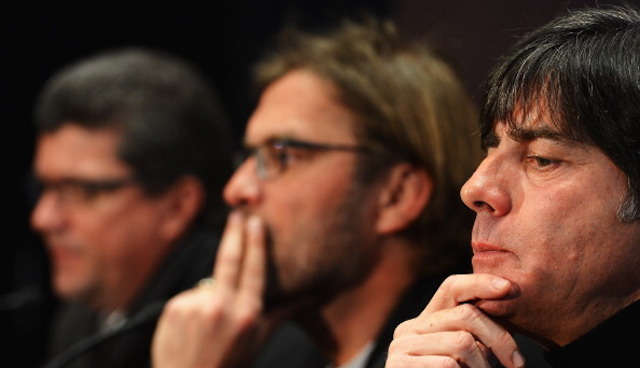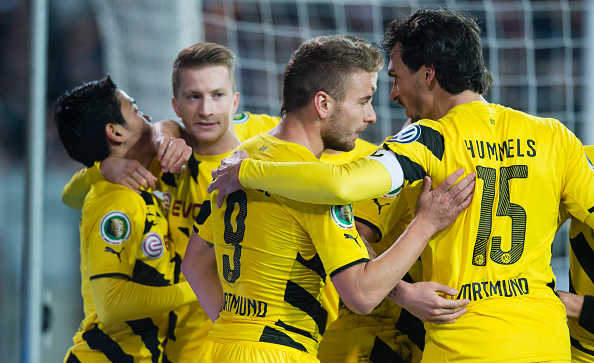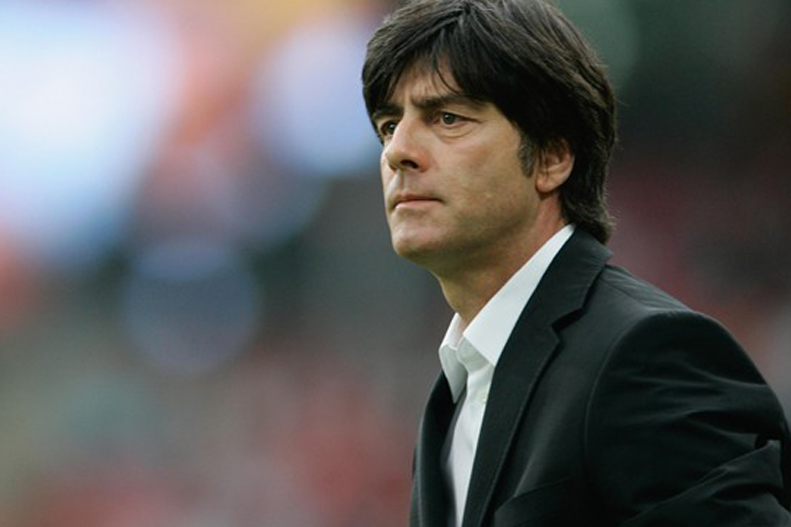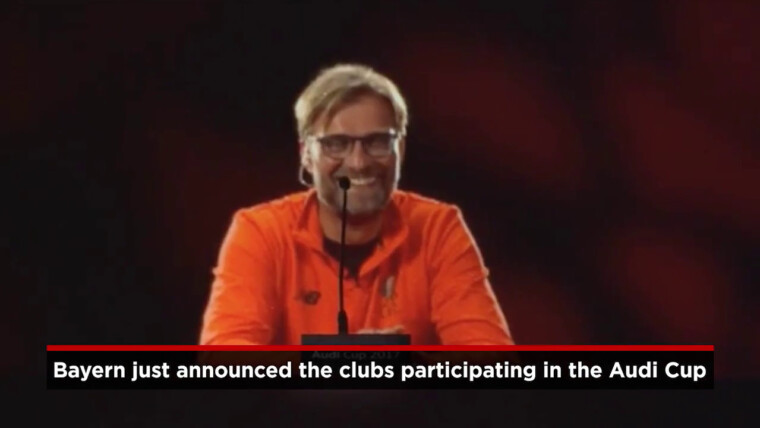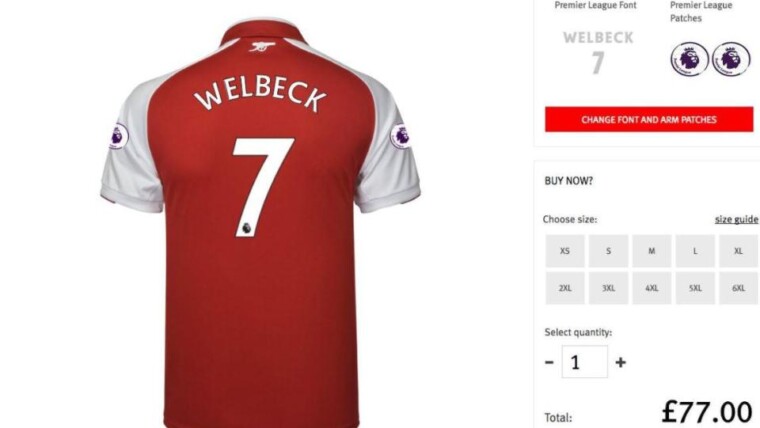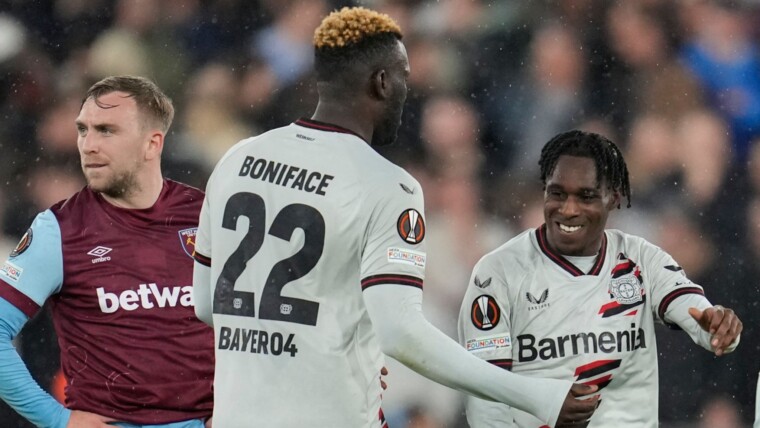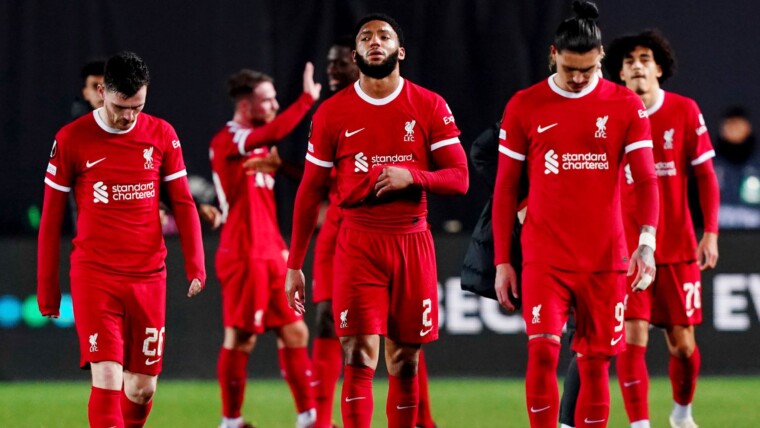While Bayern Munich are the biggest and best club in the land, they aren’t really the face of the German football revolution, simply because they have been successful and strong for so long.
Rather, the two sides most people associate with the re-invention of the German game that began roughly ten years ago – and gave us pace instad of power, grace instead of grafting, daring instead of defending – are the national team under Joachim Löw and Borussia Dortmund under Jürgen Klopp.
So isn’t it amazing, not to say bizarre, that those two sides, not too long after celebrating their biggest triumphs, are going through the worst crises of their respective managers’ reign at exactly the same time?
A year after playing in the Champions League final, Borussia Dortmund are mired in a relegation spot in the Bundesliga. The team has not won a league game in eight weeks and has lost five matches on the trot, the club’s worst run since March/April 2000.
Four months after winning the World Cup, the national team looks equally derailed and will approach the upcoming two internationals (against minnows Gibraltar next week and then the prestigious clash with Spain) with trepidation. The team has won only one of four matches this season – and that was the close and ugly 2-1 against Scotland. Germany conceded four goals in 30 minutes against Argentina, lost to Poland for the first time in history and was held to a 1-1 draw at home by the Republic of Ireland.
Is this a coincidence? Yes and no.
Dortmund and the national team share a few problems. Both have lost their best goal scorer during the off-season – Borussia’s Polish marksman Robert Lewandowski joined Bayern, while Germany’s Polish-born striker Miroslav Klose retired from international duty. Both have lost a full back and don’t quite know how to replace him: Philipp Lahm, like Klose, finished his Germany career, while Dortmund’s left-back Marcel Schmelzer has been sidelined on and off since mid-March.
Both have been missing key players, especially in central midfield and in the creativity department, on account of injury. Löw had to make do without his playmaker Mesut Özil plus Sami Khedira and Bastian Schweinsteiger, who normally play in front of the back four. Klopp has been without his deep-lying playmaker Nuri Sahin since the summer, while Ilkay Gündogan is only just coming back from a nagging injury that cost him almost an entire season (and the World Cup). Add to this Dortmund’s international Mats Hummels, who clearly suffered from the after-effects of the World Cup, missed the pre-season preparations and then struggled to find his form for both club and country.
This explains to some degree why both teams found it extremely hard to play against massed defences. Borussia Dortmund did very well in the Champions League (where they have won every game so far), mainly because their opponents gave them a game, which allowed Klopp’s team to counter attack with all those fiendishly fast players like Marco Reus, Pierre-Emerick Aubameyang and Henrikh Mkhitaryan. But in the Bundesliga, Borussia never had the space these players need, because their domestic opponents simply put every man behind the ball.
That’s the same tactic Poland or the Republic of Ireland used against World Cup winners Germany. They simply sat back, absorbed the pressure and then hit Löw’s men on the break. Just like Dortmund in the league, Germany found it very hard to break down an ultra-defensive opponent. And if they came up with a solution and created chances, all of them would go begging because there was nobody who put them away with the ruthlessness of a Klose or a Lewandowski.
There is one major difference, though. Klopp has been trying all kinds of systems and line-ups during the first weeks of the season. Ever since October 2009, when the coach first used two holding midfielders and a central playmaker in the hole behind the lone striker upfront, Dortmund’s formation has been the 4-2-3-1. But during the summer, Borussia clearly tried to become more flexible, perhaps inspited by how effortlessly Pep Guardiola shuffles players around at Bayern and changes systems not just between games but during games.
Dortmund began their league season using a diamond formation in midfield, with only one player in front of the defence and two forwards, a 4-1-2-1-2. Then they switched to 4-1-4-1. Then they brought Shinji Kagawa back from Manchester United, who’s perfectly suited to Klopp’s old system, and thus returned to 4-2-3-1. Then the coach used two men upfront again and played an almost classic 4-4-2, for instance against Arsenal.
It may have been the wrong moment to try out various approaches and at the same time install a rotation policy. Dortmund never found their rhythm during the first weeks and once the defeats in the league kept piling up, they also rapidly lost their confidence whenever they conceded a goal. Normally when this happens what you try to do is give the players a familiar surrounding in which they feel secure because they know what is expected of them. So perhaps it would be wise to return to 4-2-3-1 for good, at least until the winter break, which traditionally gives German clubs a chance to regroup and work on tactics.
That doesn’t mean you should always stay with the tried and tested and never move forward, of course. Because I think that, in marked contrast to Dortmund’s situation, Löw may have been too inflexible during the first weeks of the new season. In every game since the World Cup, the national coach has played 4-2-3-1. This formation, it should be noted, was first used by Germany in a match against South Africa in September 2009. The reason for this innovation was obvious: It was Mesut Özil’s first game in the starting XI and the national coach – correctly, as it turned out – felt that the player’s best position was in central offensive midfield, behind a classic target man like Klose or Mario Gomez.
But now Özil is injured. What’s more, there is no striker anymore. With Klose retired and Gomez out of form (and out of favour with many fans), Germany are forced to use a so-called ‘false nine’ upfront, Thomas Müller or Mario Götze. But as the recent games have shown, it just isn’t a very effective system against deep-lying teams. Finally, Germany also lack not one but two full-backs, now that Lahm has retired. Not to mention that Löw’s favourite two holding midfielders, Khedira and Schweinsteiger, are unavailable.
Put differently, Germany stubbornly use four at the back even though they don’t have four. They use two in front of the defence even though the men best suited for this role aren’t there. They use three in offensive midfield even though the player for which this system was invented is sidelined. And they use one upfront even though they don’t have a striker.
With a weak opponent like Gibraltar coming up, and then a friendly against a really good team, this might be a good time to try out something new. Perhaps only three at the back, like Bayern do? Or two men upfront, because then neither of them has to be a classic target man? In any case, after almost five years during which their teams almost always lined up in the same formation, both Klopp and Löw will now have to ponder the pros and cons of change vs stasis.
Other posts by Uli Hesse

